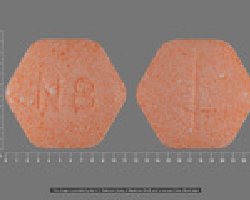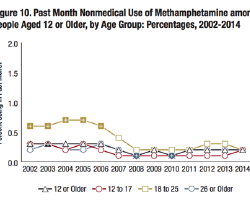The Ever-Changing World of Deadly Drugs and Addiction

In the world of drug use and addiction, only one thing is certain: This world will never stop changing. New drugs will appear and old ones will fade away. Communities or regions that were once safe havens in which to raise families will become hotbeds of drug cartel activity. The use of certain drugs that were once considered taboo will become acceptable to certain segments of the population. New marketing and distribution techniques bring dangerous drugs to your very doorstep or your child’s dormitory.
What this means is that anyone who wants to prevent drug abuse in their community or by their children can never stop being vigilant. Here are some of the changes we’ve been watching over the last decade or so.
Criminals adapt to law enforcement tactics.

This has been particularly true along the U.S.-Mexico border. Major drug trafficking routes have shifted from Tijuana to El Paso, Texas, and then to Arizona. When one area gets too hot, trafficking channels move to some other area that is not subject to high levels of law enforcement attention.
Major drug dealers also move their distribution centers in response to law enforcement pressure, often moving out of inner cities and into the suburbs. In 2017, police arrested a member of the Sinaloa drug cartel in Willingboro, an attractive suburban town in New Jersey that seldom sees the need for any police action. They seized enough fentanyl to kill everyone in South Jersey, as well as another 40 kilograms of heroin.
Some unscrupulous criminal gets an idea of how to capitalize on a trend of drug use.
This happened in Washington State in 2008 when Jevon Lawson established a trafficking operation that acquired hundreds of thousands of OxyContin pills from Southern California clinics handing out pills to anyone. He and his helpers then drove them up Interstate 5 to Everett, Washington. He made millions, lived in a $400,000 house and drove a champagne-colored Humvee.
In 2016, a young man named Aaron Shamo was arrested in Utah for running an extensive pill-pressing operation. He ordered drugs like oxycodone or fentanyl from overseas manufacturers and, using his own pressing machine, made pills out of them and sold them to buyers who found him on his hidden internet site. He had $1.2 million in cash in his basement at the time of his arrest.

Shamo was only one of many people across the country who have been arrested by police or the Drug Enforcement Administration for manufacturing counterfeit pills. When drug dealers begin to manufacture pills in their garages, they are not professionals. The potent ingredients may not be well-mixed with inert ingredients. Anyone snorting or injecting a particularly hot pill can die. Some of the people buying pills from these sources will not suspect that they are counterfeit and dangerous.
A drug gets a really bad reputation and falls out of favor.
This happened with PCP a few decades ago. The effects of using this drug were so disastrous and injurious that by and large, the public stopped buying it. It happened much more recently with the synthetic drug flakka and some other synthetics. An early and very alarming story about flakka surfaced in 2015 when a man high on this synthetic drug tried to climb the pointed metal fence around the Fort Lauderdale Police Department. He managed to impale himself on the top of the fence, an act that was caught on a cringe-worthy video. You didn’t hear as much about flakka after that.
New drugs arrive on the scene.

New drugs—or hundreds of new drugs. This trend started around 2010 when a number of new synthetic drugs started making their way from Europe to America. Soon, these drugs needed their own new category—they were dubbed “new psychoactive substances.” Between 1997 and 2004, nine of these drugs had been analyzed by European authorities. By 2014, more than 450 new substances had been detected. These new drugs included BZP, methylone, mephedrone, synthetic marijuana, synthetic cathinones and many, many others. In America, many of these drugs are legal until changes in laws can catch up and ban them. When that happens, chemists simply make the tiniest change in a molecule and law enforcement may not be able to arrest the dealers or buyers or seize the drug until the law is updated. Thus, we end up with hundreds of formulas.
Those who are addicted shift their use patterns based on changes in supply.
In 2010, Purdue Pharma stopped selling the OxyContin that was so popular with those who misused and were addicted to these pills. Purdue replaced the popular pills with ones that turned to jelly if the user tried to crush them so they could be snorted or injected.

This change occurred after more than a decade of aggressive marketing that put many millions of pills on the illicit market. By the time OxyContin changed, more than five million people a year were misusing their pain medication. And when the most popular pill on the market became unusable, what happened next was completely predictable: Those who were already addicted to opioids and couldn’t use these pills any more migrated to heroin. Painkiller overdose deaths gradually began to flatten out slightly as heroin overdose deaths increased. The next change was the arrival of massive quantities of illicitly-manufactured fentanyl on the market, trafficked in from overseas. This further altered the landscape of opioid addiction and overdose. Fentanyl overdose deaths rocketed after 2014.
Completely ruthless drug dealers hit on innovative new ways to generate more steady customers.
This has happened so many times, it’s not even funny. All a drug dealer has to do is give away samples of highly addictive substances or make it so cheap it’s irresistible. And they make a point to conceal the fact that it’s dangerously potent. This happened in Plano, Texas, when adolescents were encouraged to try “cheese,” a drug made from heroin and chopped-up diphenhydramine, an antihistamine found in Tylenol PM. A single dose only cost $2. Before Texas teens got wise to the fact that this was a deadly mix, 21 youth died from overdoses.
In Chicago in 2017, eight people overdosed on free samples of heroin that were handed out on street corners from a 2001 Impala. And in August 2016 in Cincinnati, 30 people overdosed in one night and some of the victims said they had OD’d on a free sample given to them. Police suspected these samples may have contained the massively-potent large animal sedative carfentanil. If a person survives his use of the sample and he finds he has an avid taste for this product, he will return to this dealer again and again to get more drugs.
It would be easy to continue this article for several more pages, documenting the way the drug world shifts and mutates over time. If you’re working hard to raise drug-free children or you’re helping rehabilitate members of your community, please be prepared for massive shifts in the patterns of supply and demand. In my eleven years monitoring this world, it seems that there’s a significant change at least once every 18 months or so.
Right now, the newest shift is an increase in the use of stimulants like cocaine, methamphetamine or prescription stimulants. Cocaine and methamphetamine are sometimes laced with illicitly-manufactured fentanyl or one of the dozens of chemically-similar drugs (referred to as fentanyl analogues) on the market. Is this a method of enticing people to greater opioid use and addiction? It’s not clear yet. But you can see the increases in overdose deaths related to stimulants reflected in the chart above.
While I monitor this new trend, I’m going to stay alert for the next development. I recommend that you do the same.


 ®
®